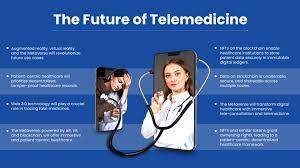Introduction to Telemedicine
In recent years, the landscape of healthcare has undergone a transformative shift, with telemedicine emerging as a pivotal force in shaping the future of healthcare delivery. Telemedicine, a term coined to describe the use of technology to provide healthcare services remotely, has evolved significantly, encompassing a wide range of medical specialties and patient needs.
Evolution of Telemedicine
Telemedicine’s roots trace back to early experiments with telegraph-based consultations. However, it is the rapid evolution of technology that has propelled telemedicine into the forefront of modern healthcare. From simple telephonic consultations to advanced video conferencing and wearable devices, the journey has been nothing short of remarkable.
Benefits of Telemedicine
The advantages of telemedicine are multifaceted. It not only addresses issues of accessibility but also contributes to cost-efficiency and improved patient engagement. Through virtual consultations and remote monitoring, patients can access healthcare services from the comfort of their homes, breaking down geographical barriers.
Challenges and Concerns
Despite its potential, telemedicine faces challenges such as security and privacy concerns, technological barriers, and regulatory hurdles. Striking the right balance between convenience and ensuring the highest standards of care is crucial for the widespread adoption of telemedicine.
Telemedicine and Global Health
Telemedicine holds the promise of addressing healthcare disparities globally. In developing countries, where access to medical facilities is limited, telemedicine emerges as a lifeline, connecting patients with healthcare professionals and expert advice.
Telemedicine during Global Health Crises
The recent global health crises, including pandemics, have underscored the importance of telemedicine in emergency situations. The ability to provide remote consultations and monitor patients from a distance has proven invaluable in managing healthcare demands during crises.
Technological Innovations in Telemedicine
The integration of artificial intelligence in telehealth and the use of wearable devices for remote patient monitoring are pushing the boundaries of what telemedicine can achieve. These innovations not only enhance diagnostic capabilities but also contribute to more personalized and proactive healthcare.
Patient Experience in Telemedicine
One of the key drivers of telemedicine adoption is the positive patient experience it offers. The convenience of scheduling virtual appointments, reduced waiting times, and the ability to access healthcare without leaving home contribute to high levels of patient satisfaction.
Telemedicine in Specialized Healthcare
Telemedicine is making significant strides in specialized healthcare areas, including mental health services and chronic disease management. The ability to provide continuous monitoring and support for patients with specific needs is revolutionizing the approach to healthcare delivery.
Telemedicine in the Post-Pandemic Era
As the world transitions from pandemic response to a new normal, telemedicine is expected to play a crucial role in sustaining momentum. The lessons learned during the pandemic are shaping the future of healthcare delivery, with telemedicine at the forefront of innovative solutions.
Legal and Ethical Considerations
The increasing prevalence of telemedicine raises important legal and ethical questions. Licensing and regulation, as well as the development of ethical guidelines for telemedicine practitioners, are essential for ensuring the highest standards of care and patient safety.
Case Studies and Success Stories
Examining real-world examples of telemedicine’s impact provides insights into its effectiveness. From improved patient outcomes to streamlined healthcare delivery, case studies and success stories highlight the transformative power of telemedicine.
The Role of Telemedicine in Preventive Healthcare
Telemedicine’s role extends beyond reactive care to preventive healthcare. Early detection and intervention, coupled with remote monitoring, contribute to a proactive approach to maintaining health and preventing the progression of diseases.
Telemedicine: Bridging Gaps in Rural Healthcare
In rural areas where access to healthcare is often limited, telemedicine serves as a crucial bridge. By overcoming geographic barriers, it ensures that individuals in remote locations have access to the same quality of healthcare as those in urban centers.
Conclusion
In conclusion, telemedicine stands as a beacon of innovation in the healthcare landscape. Its ability to address challenges of accessibility, provide cost-effective solutions, and enhance patient engagement positions it as a transformative force for the future. As technology continues to advance and society embraces the possibilities of remote healthcare, the trajectory of telemedicine appears set for continued growth and impact.
FAQs
Is telemedicine only for minor health concerns?
- Telemedicine is versatile and can be used for a wide range of health concerns, from minor issues to chronic disease management. However, the suitability may vary based on the nature of the medical condition.
How secure is telemedicine in protecting patient information?
- Telemedicine platforms prioritize security and employ encryption measures to protect patient information. Compliance with healthcare data protection regulations is a standard practice.
Can telemedicine completely replace in-person healthcare visits?
- While telemedicine offers a convenient alternative, it cannot replace all in-person visits. Certain medical examinations and procedures still require physical presence for accurate diagnosis and treatment.
Is telemedicine accessible in rural areas with limited internet connectivity?
- Efforts are being made to improve telemedicine accessibility in rural areas. However, challenges related to internet connectivity may still exist in some remote locations.
How can healthcare providers ensure the quality of telemedicine services?
- Healthcare providers must adhere to ethical guidelines, maintain licensing standards, and use reliable telemedicine platforms to ensure the quality and safety of remote healthcare services.

